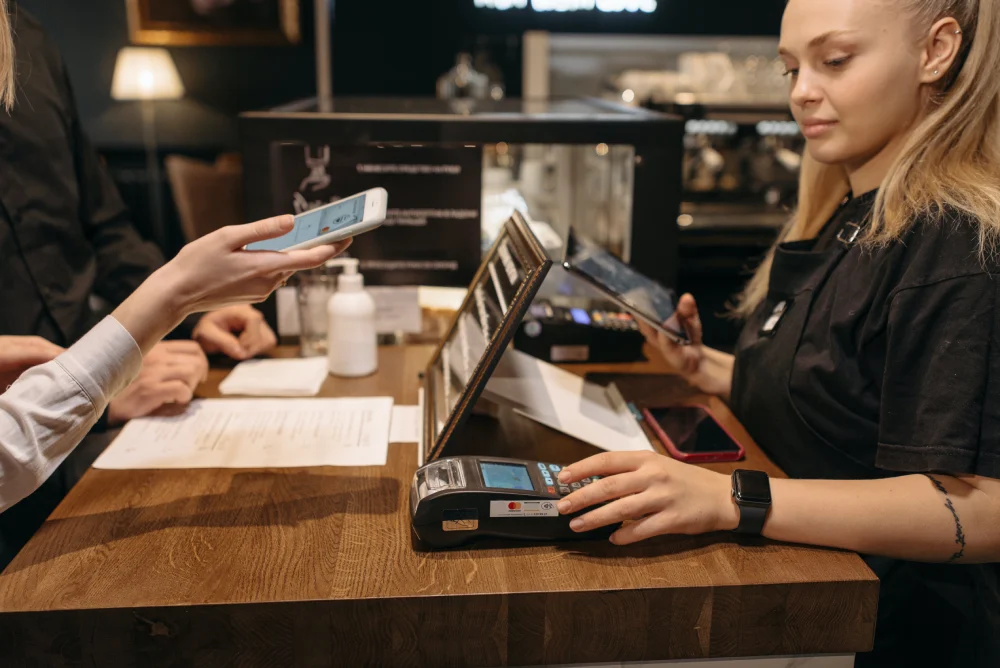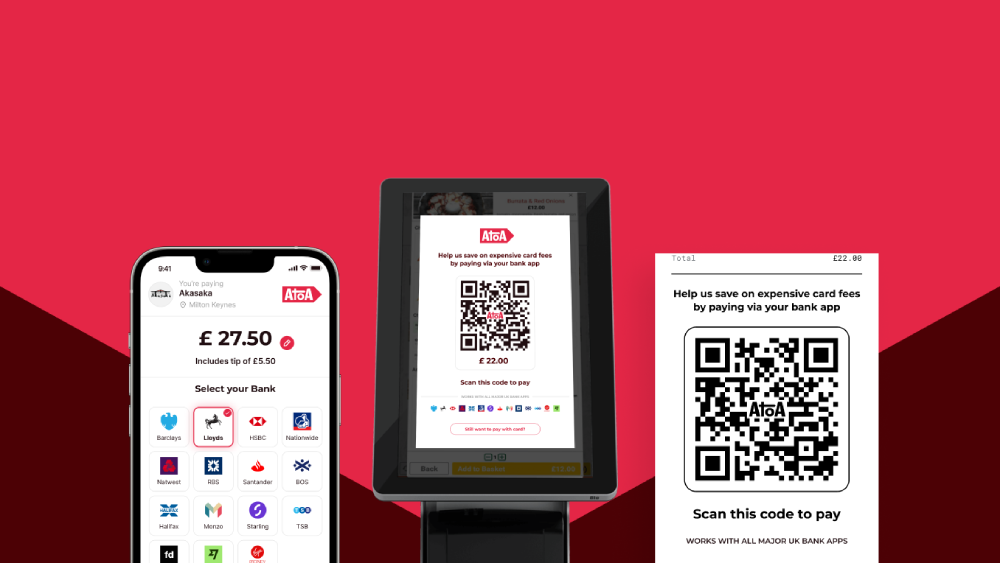Ready to get started?
Get paid faster and save up to 50% on fees with Pay by Bank.
We’ve all been there—typing in passwords, fumbling with PINs, or digging through wallets for a payment card. But what if paying could be as easy as a glance or a fingerprint tap? Thanks to biometric authentication, that future is already here. Biometric transactions are fast becoming a key part of modern payment systems. From speeding up checkout to keeping fraudsters out, it’s changing how businesses and customers interact.
In this article, we’ll explore how biometrics are being integrated into payments, why it matters for businesses, how it compares to traditional methods, and where this tech is headed.
How biometrics entered the payment space
The move from passwords and PINs to fingerprint and face recognition didn’t happen overnight. Advances in mobile tech, sensors, and digital infrastructure made it possible to verify identity using unique personal traits—instantly and securely. Today, methods like fingerprint scanning, facial recognition, and even iris and palm vein authentication are showing up in everything from phones to payment terminals. And it’s not just about security anymore—it’s also about giving users a smoother, faster experience.
Why businesses are embracing biometrics
For businesses, biometrics bring more to the table than just cool tech. Here’s how they make a difference:
- Stronger security: Biometric data is much harder to fake or steal than a password or PIN. That makes it a powerful defence against fraud and unauthorised payments.
- Better customer experience: No one likes remembering yet another password. With biometrics, customers can authorise payments in seconds—with a tap or a glance.
- Operational efficiency: Fewer password resets. Fewer lost cards. Less manual admin. It all adds up to time saved and lower support costs.
- Fewer chargebacks: Because biometrics help confirm who’s actually making the payment, they can reduce the chance of disputed transactions or fraud-based chargebacks.
- Scalable and flexible: Biometrics can be used in-person, online, and across multiple systems—from payment platforms to staff access control.
- Long-term savings: The upfront investment can be higher, but over time, reduced fraud, faster transactions and fewer admin headaches help cut costs.
Biometrics vs traditional authentication methods
Here’s how biometric authentication stacks up against more traditional options like passwords or PINs:
| Aspect | Biometric authentication | Traditional authentication |
|---|---|---|
| Security | Hard to fake or steal—based on unique biological traits | Susceptible to theft, guessing, or misuse |
| User convenience | Fast and frictionless—no passwords or cards to remember | Can be slow and error-prone, especially if forgotten |
| Setup costs | Higher upfront investment, especially for hardware | Lower initial costs but higher ongoing admin/fraud costs |
| Scalability | Easily integrated across systems and platforms | Often requires more effort to link across platforms |
Reducing fraud and chargebacks
Fraud is a headache for businesses—and for customers too. Biometric authentication helps prevent unauthorised transactions by ensuring the person paying is exactly who they say they are. This makes it much harder for fraudsters to slip through the cracks, which in turn reduces disputes and chargebacks. That’s good news for your revenue and your reputation.
Do customers actually want biometrics?
Yes—they really do. In fact:
- A Dentsu Data Lab study across 14 countries found 81% of people were willing to use fingerprint scans instead of PINs.
- A UK-focused survey showed 65% of consumers prefer using biometrics for ID verification because it feels faster and more secure.
That growing comfort with biometrics means businesses can adopt the tech with confidence.
Where biometrics fit in online payments
Biometric authentication isn’t just for in-person payments. It’s playing a big role in online and mobile payments too.
- Platforms like Google Pay and Apple Pay use fingerprint and facial recognition, to authorise transactions securely and quickly. This allows users to complete a payment, adding an extra layer of security.
- Payment platforms like Atoa and others are exploring ways to embed biometrics into their checkout flows to improve both speed and security.
- Biometric verification also helps meet regulatory requirements like Strong Customer Authentication (SCA) under Revised Payment Services Directive (PSD2), making it easier for businesses to stay compliant.
A few bumps in the road
Of course, no technology is perfect. Businesses considering biometric authentication should be aware of:
- Privacy concerns: Biometric data is sensitive and must be stored and managed carefully. Transparency and compliance with the UK’s GDPR rules are a must.
- Tech setup and integration: Getting biometric systems to work smoothly with your existing infrastructure may require some upfront planning and investment.
- Customer education: Not all customers understand how biometric transactions works. Clear messaging helps build trust and drive adoption.
What’s next for biometrics in payments?
Biometrics are evolving quickly—and we’re just scratching the surface. Here’s what’s on the horizon:
New biometric methods
Think palm vein recognition, heartbeat patterns, or behavioural traits like the way you type or walk.
Smarter systems powered by AI
AI can make biometrics more accurate, adaptable, and secure by learning and adjusting to users over time.
Global standards and broader adoption
As biometric tech matures, we’re likely to see more consistency across countries, devices, and industries—making it easier for businesses to implement.
Final Thoughts
Biometric authentication in online transactions is more than just a tech trend—it’s a practical solution to everyday payment problems. It makes transactions quicker, safer, and smoother for everyone involved.
For UK business owners, embracing biometrics could mean fewer fraud issues, happier customers, and staying one step ahead in an increasingly digital world. And with more consumers warming to the idea, now might be the perfect time to give your payment experience a modern, biometric-friendly upgrade.



